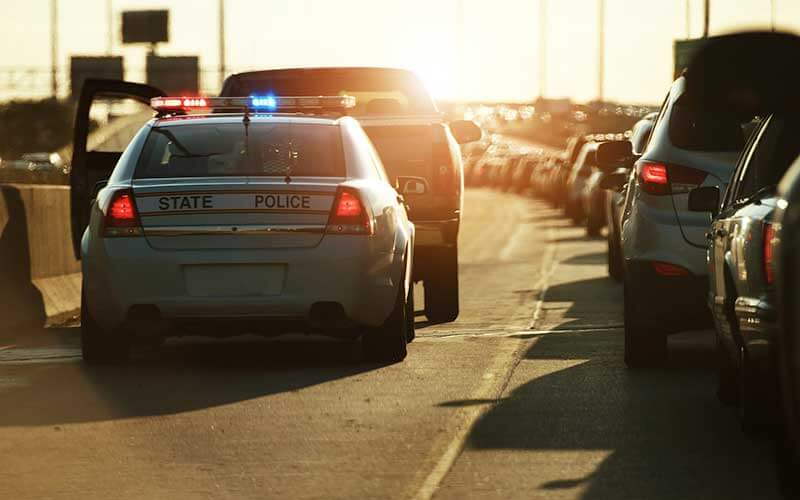Driving around Florida can get complicated with travelers from around the world navigating the streets. Don’t get in trouble and follow these interesting traffic laws!
- :Q: Can I use my phone while driving?
- Texting while driving is prohibited and a violation of the law. It is also against the law to have your phone in your hand. You must completely hands free of your device while operating your vehicle and limit distractions while driving.
-
PRO TIP: purchase a holder for your phone to use navigation while you’re driving as well as bring a car lighter charger and cord.
-
- Texting while driving is prohibited and a violation of the law. It is also against the law to have your phone in your hand. You must completely hands free of your device while operating your vehicle and limit distractions while driving.
- Florida has the most miles of toll road in the country. Ensure to familiarize yourself with the toll roads prior to planning your route. You may want to avoid tolls, but keep in mind it will add time, traffic, and often distance to the route. Pre-program your route in your GPS to AVOID tolls if you don’t want to take the toll roads.
-
PRO TIP: purchase or pre-order your transponder from E-Pass or Sun Pass prior to arrival.
-
- Q: Which side of the road to people drive on in Florida?
- Vehicles are operated from the left side of the car and drive on the right side of the road.
- Q: What ID do I need to drive a car in Florida?
- If you’re driving from out of the state or country, you’ll need a valid driver’s license from your home location. Ensure to check with any rental car agencies what additional documentation is required to rent a vehicle.
- Q: Can I make a U-Turn in Florida?
- Yes! You can make a U turn from the far-left lane into the closest lane where appropriate, unless otherwise posted. Do not cross medians to turn around.
- Who needs to wear a seatbelt in Florida?
- Seatbelts are REQUIRED for drivers, front seat passengers, and all children under 18 riding in the vehicle. It is highly recommended, however, that ALL people wear seatbelts at all times. Children under 5 years old and under must be restrained by a crash-tested approved car seat. Children 12 and under should ride in the back seat, as airbags can be dangerous to small children.
- Can I turn on red in Florida?
- Yes! You can make a RIGHT turn at a red traffic light, provided traffic is clear and you have plenty of space in the lane to occupy – unless there is signage indicating “NO TURN ON RED.” You are never permitted to turn left on red in Florida unless you are traveling from a one-way road to another one-way road.
- Can I stop in an intersection in Florida?
- NO! Do not stop within an intersection. If you are approaching an intersection and you notice the traffic ahead is slowing and stopping, come to a complete stop behind the white line at the traffic light and proceed during the green light once there is enough room for your entire vehicle to fit on the other side of the intersection.
- Also, if you are approaching train tracks, do NOT stop on the train tracks. Come to a complete stop behind the white line before the tracks if there is not adequate space on the opposite side of the tracks for your entire vehicle.
- This also goes for pedestrian walkways. You may not stop on a pedestrian walkway.
- It is also courteous to leave adequate space for cars to pass through if there is a side street or U turn lane so those drivers have space to merge into traffic.
- Do I have to let pedestrians cross the road?
- YES! Pedestrians and bicyclists have the right of way within crosswalks and it is a traffic violation not to let them cross once they are within the crosswalk.
- Do I have to move over for emergency vehicles?
- Yes! You must slow down and leave the lane closest to parked emergency vehicles. These include but are not limited to police cars, fire trucks, and ambulances on highways with two or more lanes in the same direction as the vehicle to protect law enforcement and emergency workers.
- If a moving emergency vehicle has its lights and / or sirens on, you’re required to move to the farthest possible edge of the roadway and stop until the vehicle has passed.
- What is the speed limit for a school zone?
- The speed limit in Florida schools is 20 mph. The most expensive ticket you can get for speeding is within a school zone or a construction zone, so be sure to pay attention to the posted and flashing signage indicating the school zone areas and times.
- Do I have to stop for school busses?
- YES! The ticket for passing a school bus includes 4 points on your license. Never pass a stopped school bus that is loading or unloading children. You’ll know it is loading or unloading the children when the stop signs on the bus are out and the bus’s hazard lights are flashing.
- What should I do if I get into an accident in Florida?
- First you must stop – never leave the scene of a traffic accident. You are required to give your name, address, license plate number, and vehicle registration number to others involved in the accident, even if the car is a parked car with nobody present.
- Call the local police at 911 if an emergency or their local line to report the incident if there are injuries occurred or if property damage exceeds $500.
- Move the vehicle out of traffic if you are able. If not, you must get help or a tow truck to move it.
- How many alcoholic drinks can I have and still drive?
- NONE! Zero! It is illegal to drink alcohol or be under the influence of drugs and drive in Florida. The legal blood alcohol concentration (BAC) limit is 0.08% or more.
- Can I leave my kids in the car and just run into the store?
- NO! Never leave a child unattended in a motor vehicle – regardless if it’s running or not. A violation of this law could mean a second-degree misdemeanor up to a third-degree felony.
- It’s raining – should I put my hazard lights on?
- NO! This actually is MORE dangerous to vehicles who actually have reason to have their hazard lights on. It also dims the brake lights so it’s harder to tell if the vehicle is stopping. Keep a safe following distance when it is rainy and pay close attention to vehicles stopping.
- Do I really have to turn on my turn signal when changing lanes?
- Yes! You must put on your turn signal 100 feet ahead of any turns, lane changes, or if overcoming another vehicle.
- What should I do if I get pulled over?
- First, remain calm. Pull over as far to the right as you can away from traffic and out of the lane. If it’s night, reduce your headlights and turn on the interior light. Be prepared to show the officer your driver’s license, vehicle registration and proof of insurance when asked. If you’re operating a rental car, provide the rental car documentation and driver’s license.
- Keep your hands visible, stay seated in the driver’s seat unless otherwise instructed, and follow all instructions from the officer.
- Who should I call if I have questions?
- Dial 511 for up to date traffic, construction, incidents, road closures and information.




